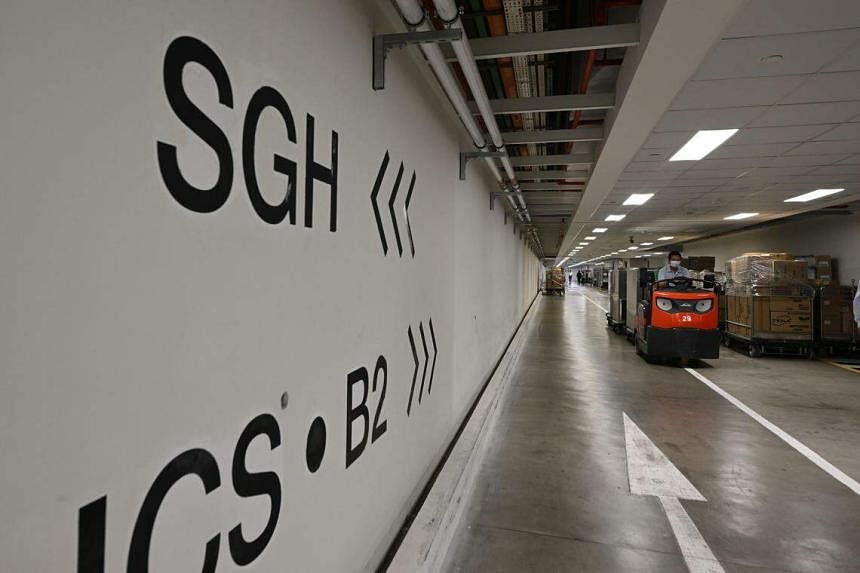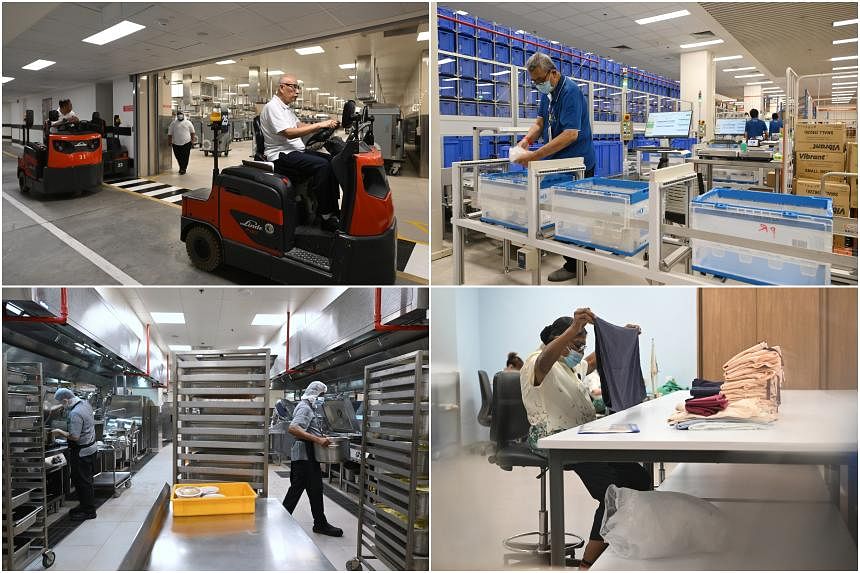SINGAPORE – Before meals reach patients’ beds in Singapore General Hospital’s (SGH) wards, they travel underground from a kitchen about 900m away.
Unbeknown to and unseen by most, these meals – along with other tools and equipment used in the hospital on a daily basis – are prepared in a subterranean network of rooms and passageways that span about 2.5km.
Siting facilities such as kitchens and equipment sterilisation rooms underground allows hospitals here to optimise land use and free up space for patient-facing operations at the ground level and above.
On Nov 20, the media got a behind-the-scenes tour of SGH’s tunnel network, part of which was built in 1975.
The network has been expanded over time alongside the health campus, with new buildings such as Outram Community Hospital linked to it.
Among the facilities visited was a kitchen, which whips up three meals a day for about 1,900 patients.
Located under Outram Community Hospital, the kitchen is run by about 120 staff, with the earliest shift starting at 5am, said senior executive chef Tan Loon Liang.
It takes about two hours to get food to all the patients at meal times, which start at 6.15am for breakfast, 10.15am for lunch and 4.15pm for dinner.
As needs arise, the kitchen’s capacity can be increased to cater to about 2,700 patients daily in the future, Mr Tan said.
Once plated, meals are loaded onto trolleys that keep them hot or cold, depending on the dish, and then taken to the wards either by one of 13 automated guided vehicles or by tow truck.
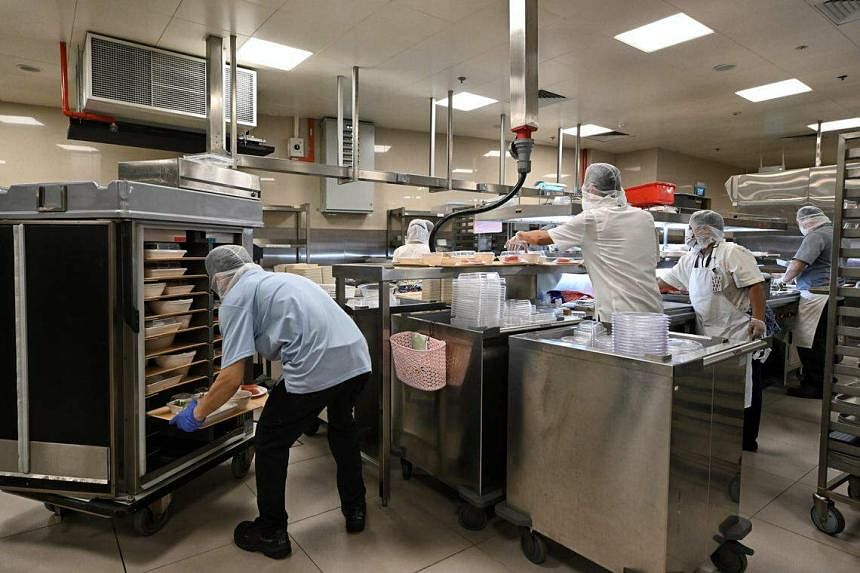
Nicknamed “cockroaches” for their strength and ability to fit through tight spaces, the automated vehicles mostly serve the newer Outram Community Hospital, lifting and dragging food trolleys – each weighing about 200kg and holding 22 meals – to the wards.
To ensure they are equipped for service, these vehicles are served by several charging bays in the network. The rest of the meals are towed to the main hospital’s wards by staff-operated tow trucks over about 900m underground.
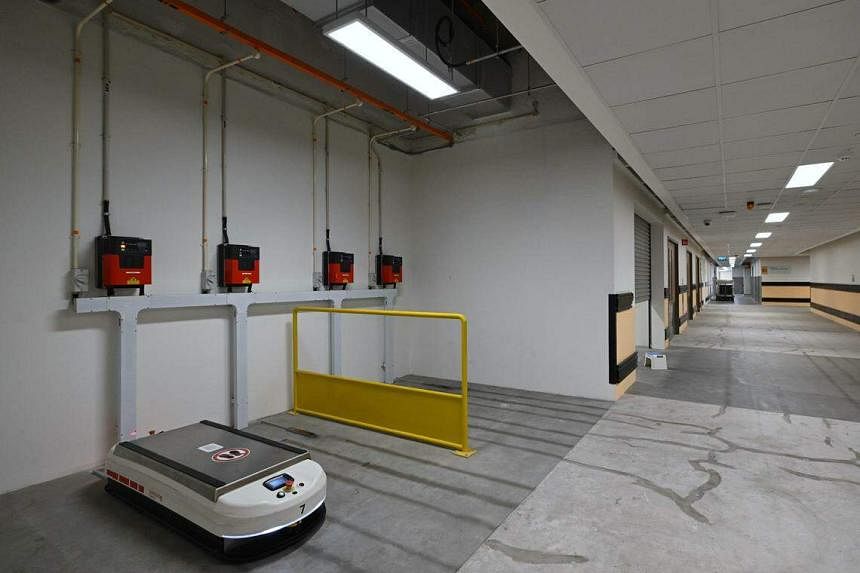
Also part of the network is SGH’s sterile supplies unit, which processes more than 1,000 sets of surgical instruments daily, such as those used in operating theatres and procedure rooms.
Machines wash the used tools for about 55 minutes under hot water and detergent to disinfect them before they are repacked. The tools are also put through an autoclave machine, which uses steam to ensure the instruments are thoroughly cleaned.
Separately, carts used to hold sterile supplies are cleaned in a purpose-built washer, which is loaded by a robotic arm, sparing the hospital’s workers from having to manually load the carts – each weighing about 150kg – into the washer.
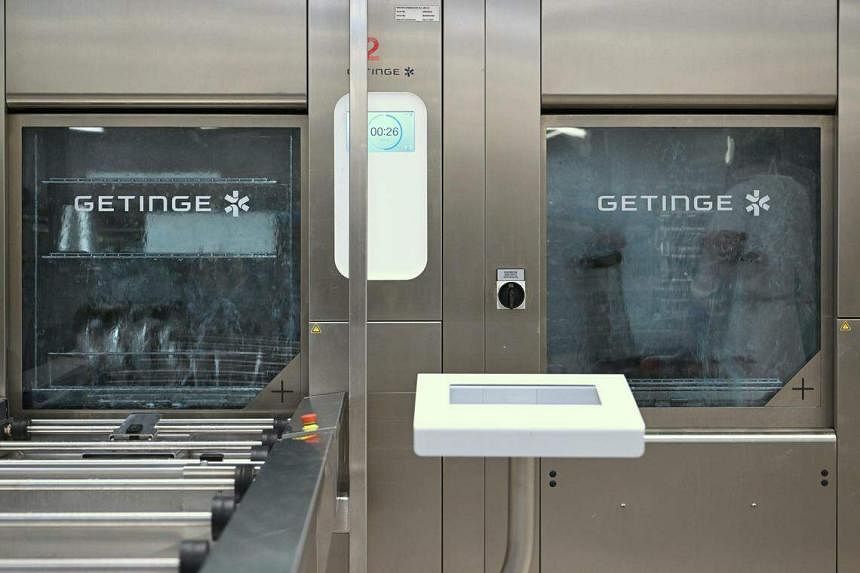
Staff are expected to know by name each of the more than 5,000 types of instruments passing through the sterile supplies unit, said deputy director for nursing Goh Meh Meh, who added that a digital system that tracks these tools has gone a long way in helping technicians to learn on the job.
At the clean linen supply unit, 30 workers handle between 18,000 and 20,000 pieces of linen a day.
The 63 types of linen range from patients’ pyjamas to medical officers’ scrubs, as well as bedsheets, blankets and curtains.
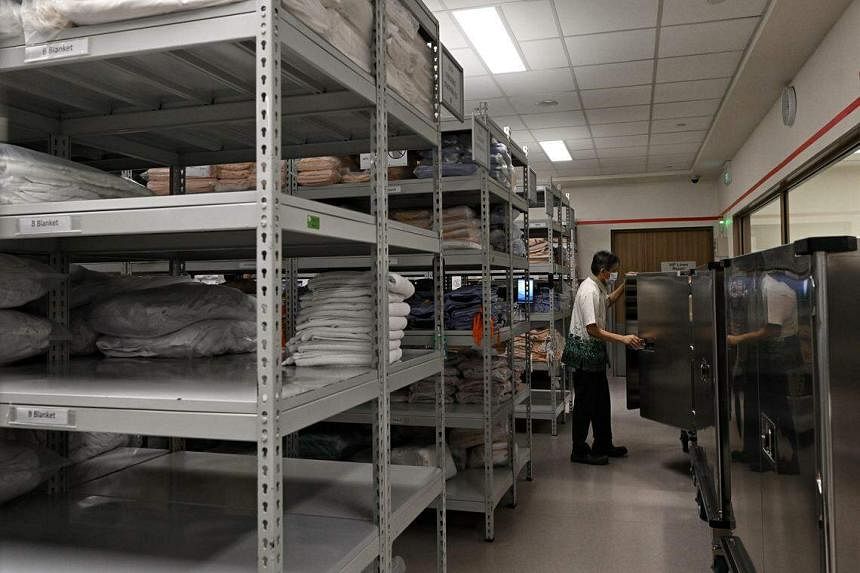
Washing is outsourced, but hospital staff sort and pack the washed linen in-house, according to the quantity needed by individual wards and units.
Clothing is inspected for defects, which can be rectified on the spot by SGH’s seamstresses. The seamstresses also help to give new life to old cloth, turning old curtains into linen bags, for instance.
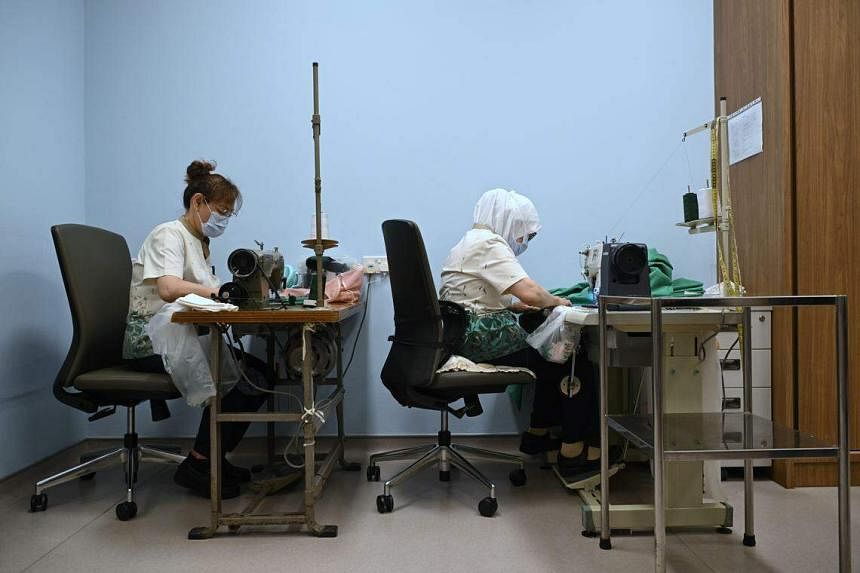
At the hospital’s underground materials management department warehouse, supplies such as dressings, drip sets and surgical masks are sorted and packed before being dispatched to wards.
When an order is received, an automated system retrieves plastic crates containing the required supplies, which are then brought by a conveyor system to the staff packing the orders to be sent out.
Mr Rosli Boedjang, supply chain assistant director, said that the warehouse currently handles more than 100 orders a day from wards and other parts of the hospital, and will be able to manage up to 250 orders a day in the future.
Overhead, throughout the tunnels, patient samples are transported between treatment rooms and laboratories in capsules that travel through air pressurised tubes.
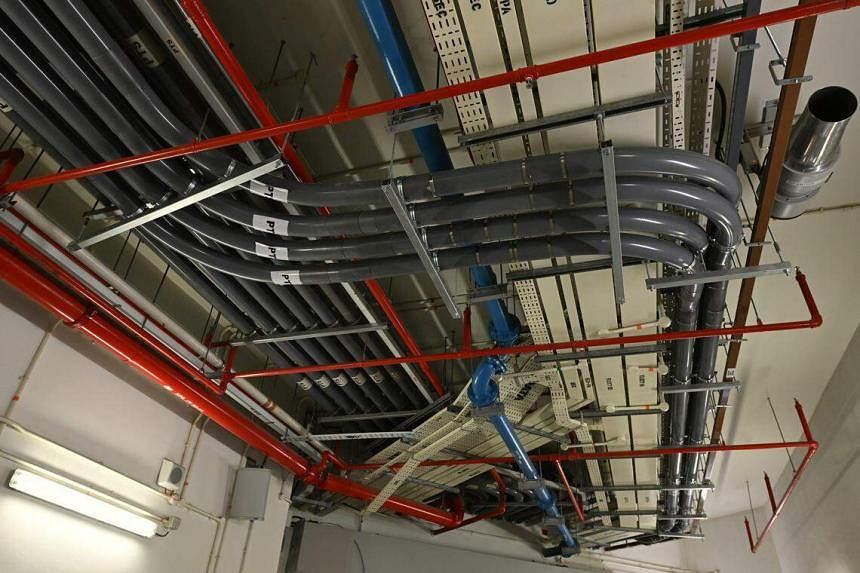
As SGH continues its expansion, the tunnel network is expected to grow with it, with upcoming additions such as the Emergency Medicine Building linked to the network through the building’s basement.
